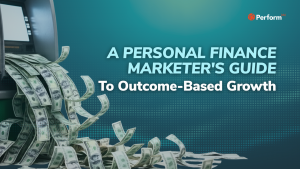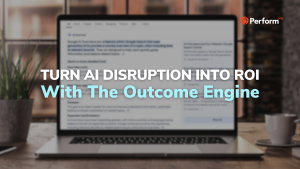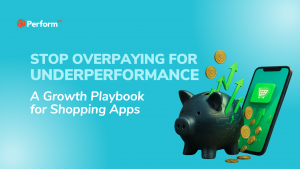- Affiliate Marketing, Affiliate Marketing & Performance Marketing Articles, All, Infographics, Performance Marketing
CPA Marketing Pricing Models: What Every Marketer Should Know
- Perform[cb]

Table of Contents
Marketers today are under pressure to prove impact. Every dollar spent needs to drive measurable outcomes – not just impressions or clicks that may or may not lead to conversions. That’s why brands who have leaned into CPA pricing models are ahead of the curve, paying only when real results are delivered.
These models aren’t designed to replace what’s already working. Instead, they complement existing strategies by filling gaps, expanding reach, and lowering risk. Whether your goals are to drive app installs, grow lead volume, or convert high-value customers, there’s a pricing model that can work alongside your existing marketing mix.
Here’s what marketers need to know about the most common CPA pricing models used in performance partnerships – and how each can help unlock scalable, outcome-based growth.

Share this Image On Your Site
CPA: Cost-Per-Action, Cost-Per-Acquisition
CPA is the broadest and most flexible of the CPA pricing models. It refers to any campaign where a brand pays only when a user takes a defined action – such as filling out a form, subscribing to a service, or making a purchase.
For marketers, this model removes guesswork from budgeting. You’re not paying for traffic that might convert – you’re paying for verified conversions that match your campaign goals. That kind of control is why CPA is often used as the foundation for more specific models like CPS (Cost Per Sale), CPL (Cost Per Lead), or CPI (Cost Per Install).
CPS: Cost-Per-Sale
CPS is as straightforward as it gets: you only pay when a customer makes a purchase. That makes it one of the most risk-resistant models, especially for brands with e-commerce stores or subscription products.
Because spend is directly tied to revenue, CPS is a powerful tool for marketers looking to scale sales without upfront cost.
CPL: Cost-Per-Lead
For marketers focused on building a pipeline of prospects, CPL is the go-to model. Instead of paying for traffic or clicks, you pay when a user submits qualifying information – like their name, email, phone number, or zip code.
This model is especially useful in verticals with longer sales cycles, such as insurance, finance, and education. Brands can collect leads, then nurture them through email, sales outreach, or retargeting campaigns.
CPI: Cost-Per-Install
If you’re focused on top-of-funnel growth for your app, CPI remains one of the most efficient acquisition models. You only pay when a new user installs your app, making it a straightforward way to scale your user base with clear attribution.
A national car insurance brand leveraged this model to increase app installs by 75% month-over-month – reaching users right when they were actively comparing coverage.
CPE: Cost-Per-Engagement
For mobile-first marketers, installs aren’t the only metric that matters. Engagement is key. That’s where CPE comes in: you only pay when a user not only installs your app, but takes a meaningful action within it – like completing a registration, making a purchase, or booking a service.
This helps marketers avoid wasting budget on low-value installs and focus instead on acquiring users who are likely to stick around and drive long-term value.
CPC: Cost-Per-Click
While CPC isn’t outcome-based in the same way as other models, it still has its place in a CPA marketing strategy – especially for testing creatives, landing pages, or new audiences. You pay when someone clicks on your ad, making it useful for driving traffic and gauging initial interest before optimizing toward conversion-based goals.
It’s often used in combination with other models, helping brands warm up audiences or collect early signals.
PPC: Pay Per Call
In high-intent verticals like insurance, legal, home services, or healthcare, a live conversation can be the most powerful path to conversion. Pay Per Call campaigns are designed around that moment – connecting real consumers with real agents in real time.
Unlike traditional lead gen forms that may go unanswered, a call means a user is ready to talk. When you are only paying for calls that meet your qualification criteria, it becomes a highly efficient way to scale.
The Power of CPA Marketing Pricing Models
Every model above shares one thing in common: they’re designed to deliver outcomes, not just activity. And when used strategically, these pricing models don’t compete with your existing efforts – they enhance them.
At Perform[cb], we work with marketers to plug these models into what’s already working – whether that’s paid search, display, social, or email – and amplify results without increasing internal overhead. We handle everything from partner management and media buying to compliance and optimization, so your team can focus on the bigger picture.
CPA pricing isn’t just a strategy. It’s a smarter way to grow. Connect with a CPA marketing expert today to get started.








